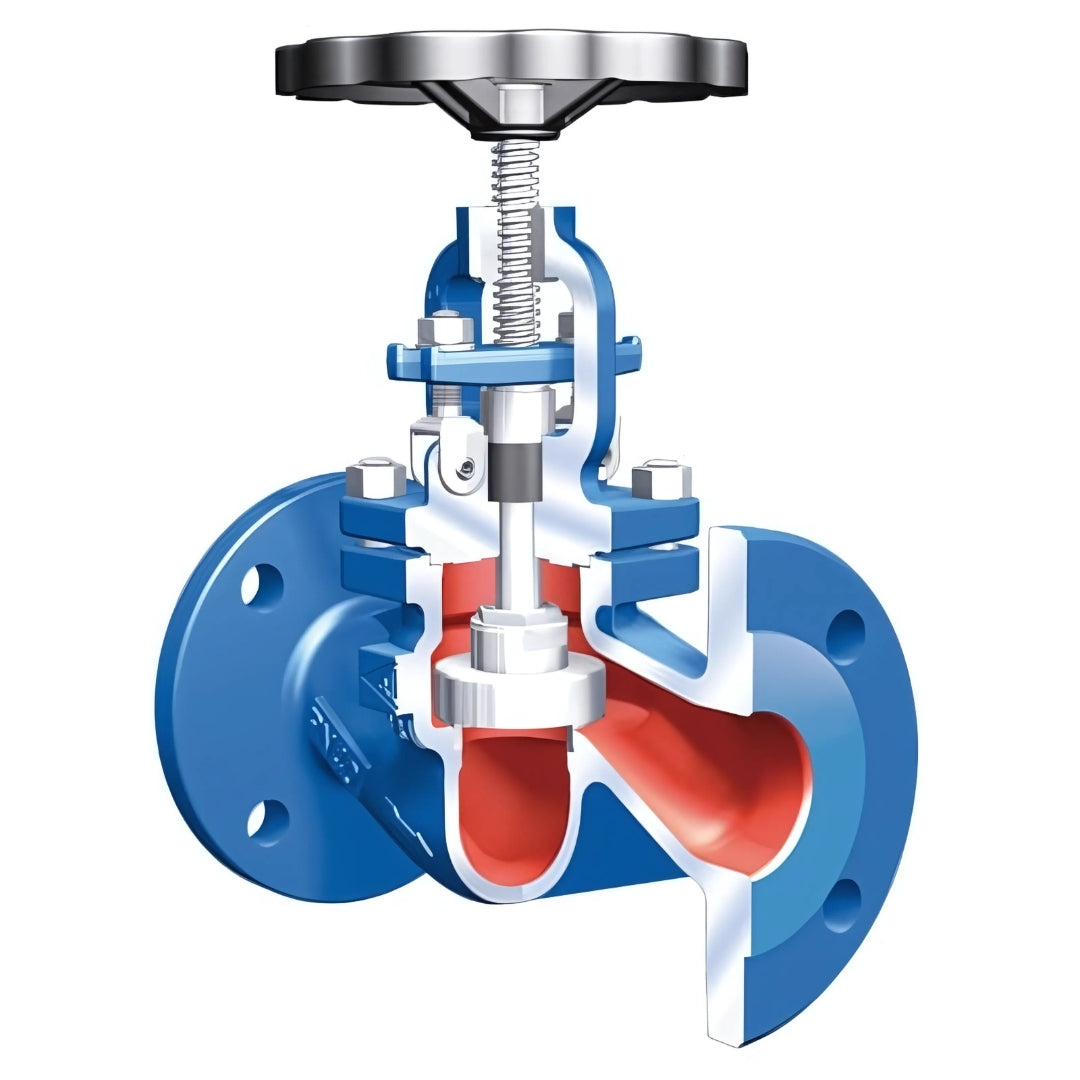Steam Valves
Ari Armaturen STOBU Gland Packed Globe Valve (Flanged PN16, Nodular Iron Body)
Ari Armaturen STOBU Gland Packed Globe Valve (Flanged PN16, Nodular Iron Body)
Couldn't load pickup availability
The Ari Armaturen STOBU Gland Packed Globe Valve with PN16 flanged ends and a nodular cast iron body is a dependable solution for flow regulation and isolation in low-to-medium pressure systems. Designed with a linear globe valve mechanism, it enables precise throttling of steam, water, or neutral process fluids, offering long-term reliability and ease of maintenance.
Manufactured from nodular iron (ductile iron), the valve body provides enhanced mechanical strength, impact resistance, and excellent pressure-handling capability. The PN16 pressure rating makes it well-suited for heating circuits, HVAC systems, water distribution, and other utility applications. The gland packing stem seal ensures effective leak-tight operation while allowing for straightforward packing adjustments during routine servicing. Flanged connections provide compatibility with standard pipework and ensure a secure, leak-free installation.
Part of ARI Armaturen’s trusted STOBU range, this globe valve is designed for durability, control precision, and cost-effective performance in everyday process environments.
Key Features
Nodular Cast Iron Body
Strong, ductile material ideal for fluctuating pressure and temperature conditions in utility and process systems.
PN16 Flanged Ends
Rated for pressures up to 16 bar, compatible with standard pipeline installations.
Gland Packed Stem Sealing
Adjustable sealing design reduces leakage and supports long-term, low-maintenance operation.
Globe Valve Flow Control
Linear throttling action offers accurate regulation and dependable shut-off characteristics.
Low-to-Medium Pressure Use
Suited for HVAC, water supply, and industrial service applications where control is key.
Reliable ARI Design
Backed by ARI Armaturen engineering for robust performance and long service life.
Share

FAQ's
What is the difference between a valve and an actuator?
What types of actuators are available?
The main types of actuators are:
Pneumatic actuators – use compressed air for fast, reliable operation.
Electric actuators – use electrical power for precise control.
Hydraulic actuators – use fluid pressure for high-torque applications.
Each type offers unique advantages depending on the environment, media, and system control needs.
How do I choose the right actuator for my valve?
To select the correct actuator, consider:
Valve type and torque requirement
Power source available (air, electric, or hydraulic)
Operating environment (temperature, humidity, hazardous area)
Control signal type (on/off or modulating)
Matching actuator torque and compatibility with the valve’s ISO mounting ensures reliable performance.
What are the main types of valves used in automation?
The most common valves in automated systems include:
Ball valves – for tight shutoff and quick operation.
Butterfly valves – for larger flow control with compact design.
Globe valves – for precise throttling and flow regulation.
Check valves – to prevent backflow.
Gate valves – for full bore flow isolation.
What’s the difference between a double-acting and spring-return actuator?
Double-acting actuators use air (or power) to both open and close the valve.
Spring-return actuators use air to open (or close) the valve, and a built-in spring to automatically return it to a safe position when power or air is lost — ideal for fail-safe operation.
How often should valves and actuators be serviced?
Regular maintenance intervals depend on operating conditions, but a good rule of thumb is to inspect every 6–12 months.
This includes checking for leaks, lubrication, seal wear, and actuator responsiveness to prevent unexpected downtime.

